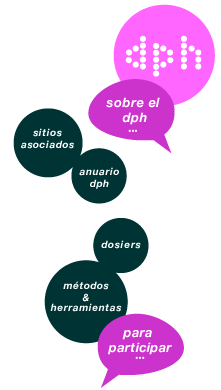Coastal aquaculture in the context of the convention on biological diversity
01 / 1998
Over half the world’s population is concentrated by the sea. For them the coastal zone is the source of life, and they depend crucially on the health of coastal marine ecosystems to maintain their livelihood. With industrialisation and the growth of human populations, coastal zones around the world have come under increasing stress. Coastal marine habitats have been degraded and wild fish stocks depleted. This deterioration has
dwindled food supplies for coastal communities and also caused social disorder, including unemployment. Aquaculture could help solve some of these problems, but current trends in aquaculture development are doing the very opposite.
Motivated by short-term profits and the compulsions of foreign trade, aquaculture as practised today has negative environmental and social impacts. These relate to poor site selection, resource consumption, waste production and pollution of the environment. Additional effects on the marine environment arise from the over-harvesting of seed stock from wild populations, the introduction of exotic species or alien genes as well as the introduction of pharmaceuticals and diseases. Aquaculture practices can also displace natural predators and disrupt the traditional ways in which indigenous peoples have long used natural resources.
Examples of harmful aquaculture practices can be found in salmon farming in several northern American and European countries, and in shrimp culture in many tropical countries in the Americas, Asia and Oceania. Salmon farming, especially in water bodies like fjords where water circulation is restricted, has severely polluted the surrounding marine environment. They have also caused disease in wild salmon populations and diluted the wild genetic stock.
Intensive and semi-intensive shrimp farming often involve the destruction of mangrove ecosystems. In Latin America and southeast Asia, disease-hit shrimp ponds are abandoned, leaving behind "mud deserts" where mangroves and associated biota cannot recolonize.
Unless these unsustainable aquaculture practices are prohibited, coastal ecosystems will continue to be exposed to more irreversible damage and loss of biodiversity. Sustainable coastal aquaculture should be guided by four basic principles:
Precaution: In cases where negative effects can be expected to occur to the environment, local biodiversity or local communities due to aquaculture projects, these should be stopped or modified.
Diversification: A wide diversity of species should be cultured within individual facilities (polyculture)and across regions.
Integration: Aquaculture should be integrated with other activities like agriculture, waste-water treatment and tourism.
Localization: Aquaculture should be developed around the needs and traditions of local communities and should incorporate them into the planning and operation processes.
There are several players in the field of aquaculture, including national and local governments, international financing institutions, banks, investors/entrepreneurs, local communities and co-operatives, non-governmental organizations, foreign markets and public consumers. As such, only international guidelines will ensure the proper development of a sustainable form of aquaculture. The Convention on Biological Diversity (CBD)would be the appropriate mechanism to develop such guidelines. The CBD Panel Review of Aquaculture in Coastal
Areas should also refer to the FAO Code of Conduct for Responsible Fisheries. Any set of guidelines should address concerns in the areas of the environment, society, economy and government. The criteria developed thus should permit countries and regions to apply them to their own specific physical, ecological and socio-economic conditions.
Palabras claves
pescado, acuacultura, deterioro ambiental, contaminación, convención internacional
,
Comentarios
Today the negative sociological impacts of aquaculture are felt most in indigenous coastal communities. The capital-intensive nature of modern aquaculture has concentrated the development of the sector in the hands of a few private entrepreneurs, government officials and external experts. The local residents, on the other hand, are excluded from the areas taken over for aquaculture. They are also not allowed to partake of the profits generated by the sale of the aquaculture crop raised in areas that may well have been theirs once. One way to protect local communities from the confiscation of coastal land and waters is to put the legal control over water resources in the hands of local water users associations.
By its very nature, modern aquaculture is multinational and multi-sectoral in its operations and impacts. In such a situation of strong interdependency, only a concerted effort of scrutiny that is international in scope and global in action can hope to reverse some of the negative outcomes of the recent rapid growth in intensive and semi-intensive aquaculture in the coastal zone.
But merely being international in conception and execution will not lead to sustainable practices in aquaculture. Only a precautionary approach, based on guidelines which will prevent further ecological and social disruptions, will result in a diverse, low-impact sustainable form of aquaculture.
Notas
Paper presented by Greenpeace International at the Second Meeting of the Conference of the Parties to the Convention on Biological Diversity, Jakarta, 6-17 November 1995
Fuente
Actas de coloquio, encuentro, seminario,…
Greenpeace International, Coastal Aquaculture in the context of the CBD

ICSF (International Collective in Support of Fishworkers) - 27 College Road, Chennai 600006, INDIA - Tel. (91) 44-2827 5303 - Fax (91) 44-2825 4457 - India - www.icsf.net - icsf (@) icsf.net



